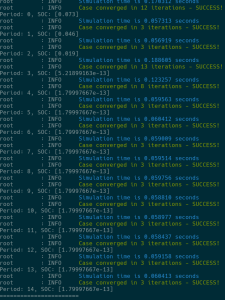Risks
- There is still uncertainty about the reliability of weather forecasts and the consistency of OPF convergence so backup/default outputs will be implemented to keep our web app simulation running smoothly.
System Changes
- Redefined error goals for forecasting to NRMSE < 20% and NRMSE <15% to more closely align with previous literature.
Schedule Changes
Please write a paragraph or two describing how the product solution you are designing will meet a specified need…
Part A. Written by Carter
Our tool has the potential to impact energy solutions worldwide. Electricity grids are globally utilized and microgrid technology as a more reliable and sustainable method of energy distribution is growing rapidly all over the world. Therefore, the tools necessary to control and predict for these microgrids is needed everywhere. In addition, weather patterns and energy availability varies greatly between different countries and regions of the world, so tools like Sugar-DB that can adapt to those changes and make predictions based on local data are needed globally.
Part B. Written by Carter
The need for reliable and sustainable energy is shared across all cultures in our modern, globalized society. Despite disagreements between different groups about the threat of climate change and the degree to which fossil fuels are culpable, the increased accessibility and economic efficiency of renewable energy can only benefit the people and the planet.
Part C. Written by Carter
A main goal in creating our simulation tool is to make renewable energy generation easier to predict and optimize around, given changing weather conditions and energy demand. This will hopefully encourage greater integration of renewable energy sources in the microgrids we already have, as well as the creation of future microgrids supported by renewable energy as well. Scientific evidence suggests that electrifying our grids and relying more on sustainable energy rather than fossil fuels will slow down the effects of climate change and potentially save natural resources that are at risk of rising sea levels and unpredictable weather patterns. Thus, our tool is designed to promote earth-friendly energy management which has the power to save lives and save the earth from climate change.

